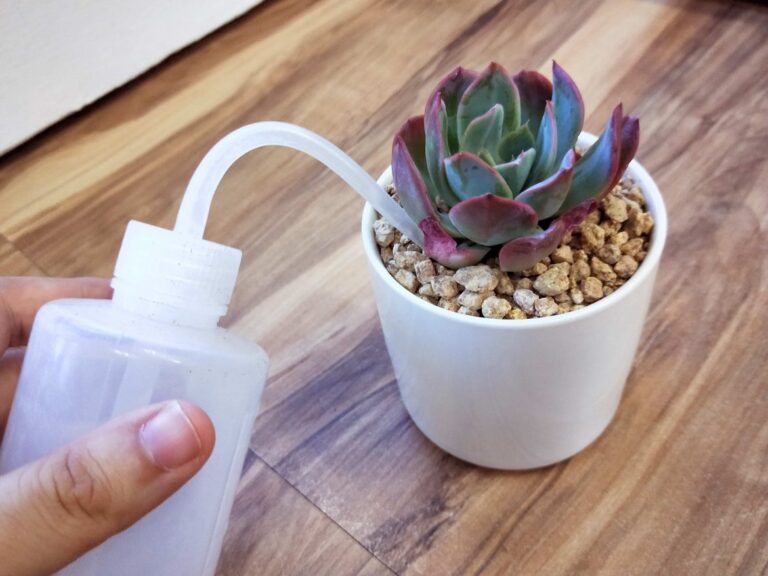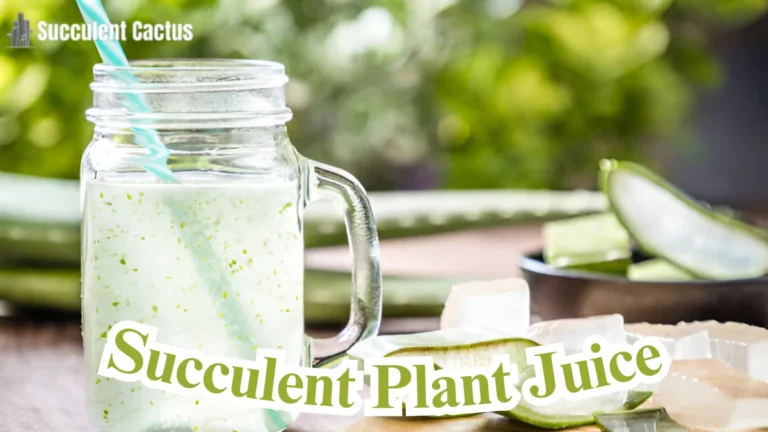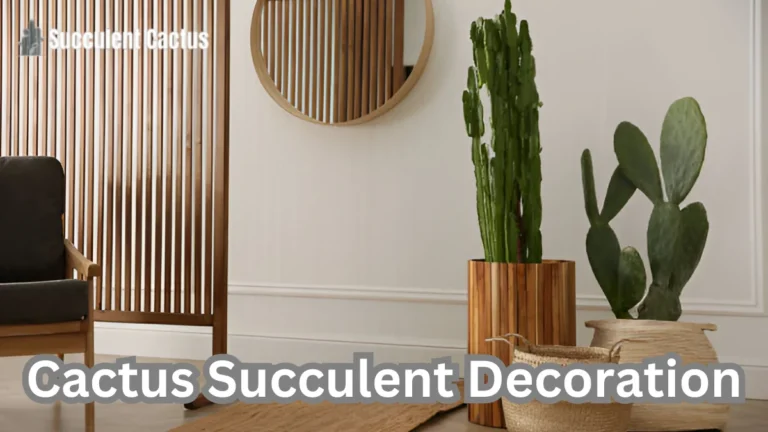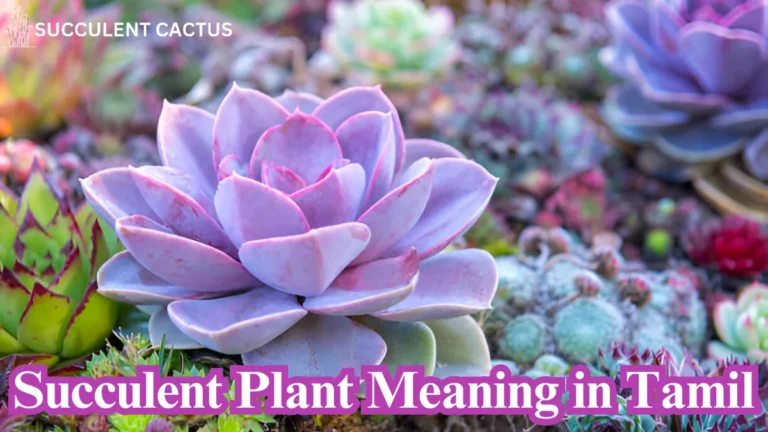Succulent Cactus Miniature: A Guide to Miniature Plant Artistry

Succulent cactus miniature is small yet captivating plant that brings natural beauty into compact spaces. From home décor to creative gardening projects, these plants offer endless possibilities for enthusiasts and beginners alike. In this comprehensive blog, we’ll explore everything about succulent cactus miniatures—what they are, how to care for them, and how to use them creatively in landscaping and décor.
What Are Succulent Cactus Miniatures?
Defining Succulent Cactus Miniatures
Succulent cactus miniatures are charming plants that have gained immense popularity due to their compact size, vibrant forms, and adaptability to small spaces. These plants, which combine the beauty of succulents and the resilience of cacti, make excellent additions to tiny spaces like office desks, windowsills, and terrariums. Typically, miniature succulents grow no taller than a few inches, making them ideal for creative arrangements like fairy gardens or unique centerpieces.
One of the most distinctive features of these plants is their ability to store water in their thick leaves, stems, or roots, enabling them to thrive in low-maintenance conditions. Their unique shapes, colors, and textures make them appealing to hobbyists and decorators alike.
Common Varieties of Miniature Succulents
Several miniature succulents and cacti are perfect for small-scale gardening. Among them:
- Haworthia: Known for its translucent leaves and compact rosettes, Haworthia species are ideal for low-light conditions and are incredibly beginner-friendly.
- Baby Toes (Fenestraria): These tiny succulents have cylindrical leaves with a translucent window-like top that allows light absorption.
- Echeveria Minima: As the name suggests, this is a smaller variety of the popular Echeveria. Its pastel hues make it a favorite among decorators.
Each of these varieties offers something unique, be it their form, color, or maintenance requirements, making them versatile options for your miniature garden.
Benefits of Succulent Miniatures
Succulent miniatures have a range of practical and aesthetic benefits.
- Space-Saving: Their small size allows them to fit into the smallest spaces, from bookshelves to teacups.
- Low Maintenance: Succulents are drought-tolerant and require minimal watering, making them ideal for busy individuals or beginners.
- Decorative Appeal: Their diverse colors, shapes, and textures can elevate the ambiance of any space.
- Air Quality: Like most plants, they purify the air, making them a health-friendly choice for indoor spaces.
Choosing the Right Miniature Cactus or Succulent
Factors to Consider
When selecting miniature succulents, consider their light, soil, and water requirements, as these factors can significantly impact their growth.
- Light: While most succulents need bright, indirect light, some can adapt to low-light environments.
- Size: Choose plants that remain compact to ensure they fit well in small containers.
- Aesthetic: Opt for varieties that complement your décor or garden theme.
Another important consideration is climate. If you live in a humid area, select plants that can tolerate occasional moisture.
Popular Cactus Miniatures
Some cactus species stand out for their beauty and ability to thrive as miniatures. These include:
- Mammillaria: This small, round cactus blooms with bright flowers, often in shades of pink or yellow.
- Rebutia: Known for its vibrant orange and red flowers, this species remains compact, making it perfect for small pots.
- Gymnocalycium: With its ribbed stems and stunning flowers, this cactus is both striking and easy to care for.
These species add a unique character to miniature gardens, thanks to their distinctive shapes and vibrant blooms.
Best Combinations for Miniature Gardens
Creating combinations of succulents and cacti can enhance the visual appeal of your garden.
- Textural Variety: Pair smooth succulents like Echeveria with spiky cacti for contrast.
- Color Coordination: Use pastel-colored succulents alongside bright green cacti for harmony.
- Theme-Based Arrangements: Create desert-inspired settings with sandy soil and stones.
Mixing plants with complementary growth habits and care requirements ensures a balanced and thriving miniature garden.
How to Create a Miniature Succulent Cactus Garden
Materials Needed
Building a miniature garden requires a few basic materials:
- Small succulents and cacti.
- A shallow container with drainage holes.
- Well-draining soil or cactus mix.
- Decorative elements like pebbles, moss, or figurines.
These materials are easily available at garden centers or online.
Step-by-Step Guide
Creating a miniature garden is a fun and rewarding process. Follow these steps:
- Choose a Container: Select a container that suits your aesthetic. Ceramic pots, wooden boxes, and glass terrariums are popular choices.
- Prepare the Soil: Use a well-draining mix to prevent waterlogging. Adding sand or perlite can improve drainage.
- Plant Succulents: Start with the larger plants, then add smaller ones to fill gaps.
- Add Decorations: Use pebbles, moss, or miniature figurines to create an appealing landscape.
Proper placement and attention to detail can transform your miniature garden into a stunning centerpiece.
Tips for Maintenance
Maintaining a miniature garden involves:
- Watering sparingly to prevent overwatering.
- Keeping the plants in bright, indirect sunlight.
- Removing dead leaves or stems to maintain the garden’s appearance.
Consistent care ensures that your garden remains vibrant and healthy.
Creative Uses for Succulent Cactus Miniatures
Miniature Gardens
Miniature gardens are a popular way to display succulent cactus miniatures creatively. By combining different species of small succulents and cacti, you can create a charming, scaled-down landscape.
- Fairy Gardens: These gardens use figurines, small furniture, and tiny pathways to create a whimsical setting. Succulent miniatures like Crassula Ovata (Jade Plant) or Sedum Rubrotinctum (Jelly Bean Plant) work perfectly in these designs.
- Terrariums: Enclosed glass containers with succulents mimic natural ecosystems while providing an elegant display for home or office décor.
- Theme-Based Gardens: Create specific themes like a desert oasis or a coastal vibe with carefully selected succulents, sand, and decorative stones.
Miniature gardens are versatile and can be adapted to various design preferences, from rustic to modern.
Home and Office Décor
Succulent cactus miniatures are ideal for sprucing up indoor spaces.
- Centerpieces: Place them on dining tables or coffee tables for an instant aesthetic upgrade.
- Desk Accessories: Small pots of succulents like Haworthia Zebra Plant can brighten up workspaces.
- Wall Planters: Vertical wall-mounted planters filled with mini cacti and succulents create living art pieces.
Their low maintenance and natural charm make them a perfect addition to any setting, especially for people with busy lifestyles.
Gift Ideas
Succulent cactus miniatures make thoughtful gifts for various occasions, including:
- Housewarming Gifts: Potted succulents in decorative containers make great welcome gifts.
- Wedding Favors: Miniature succulents in tiny pots or glass containers are memorable and eco-friendly keepsakes for guests.
- Seasonal Gifts: Pairing succulents with festive themes, such as placing them in pumpkin pots for Halloween or decorating them with ribbons for Christmas, adds a personalized touch.
These plants’ enduring appeal ensures they’ll be cherished long after the event.
Caring for Succulent Cactus Miniatures
Watering Tips
Succulents and cacti require careful watering to thrive. Overwatering is a common issue, especially with miniatures in small containers.
- Watering Frequency: Water only when the soil is completely dry. This can range from every 7–14 days, depending on your climate.
- Amount of Water: Use just enough to moisten the soil without creating puddles.
- Winter Care: Reduce watering frequency during winter as the plants enter dormancy.
Always check the soil moisture level before watering to avoid overhydration.
Light Requirements
Miniature succulents and cacti thrive in bright light.
- Indoor Placement: Place the plants near a south-facing window for optimal sunlight exposure. If natural light is limited, use grow lights to supplement their needs.
- Outdoor Placement: Avoid direct afternoon sunlight, which can scorch their leaves. Use shade cloth if necessary.
- Signs of Light Deficiency: Plants stretching toward the light or losing vibrant colors indicate inadequate lighting.
Providing sufficient light ensures healthy growth and vibrant foliage.
Soil and Fertilization
Well-draining soil is crucial for succulents and cacti.
- Soil Mix: Use a cactus-specific potting mix or create your own by combining standard potting soil with sand and perlite.
- Fertilization: Feed your plants with a diluted cactus fertilizer once a month during their growing season (spring and summer). Avoid fertilizing during dormancy.
Proper soil and fertilization encourage strong root development and vibrant growth.
Popular Varieties of Succulent Cactus Miniatures
Echeveria
Echeverias are one of the most popular types of miniature succulents due to their rosette-shaped growth and vibrant colors.
- Characteristics: They come in various hues, including green, pink, and blue. Popular varieties include Echeveria Elegans and Echeveria Black Prince.
- Care Tips: They require bright, indirect sunlight and well-draining soil. Water sparingly, as overwatering can cause the leaves to fall off.
- Uses: Echeverias are perfect for terrariums, wedding favors, and miniature gardens.
Their stunning appearance makes them a favorite among succulent enthusiasts.
Haworthia
Haworthias are compact succulents known for their unique patterns and textures.
- Characteristics: They have thick, fleshy leaves with striking stripes, such as in the Haworthia Fasciata (Zebra Plant) or dotted patterns like Haworthia Cooperi.
- Care Tips: These plants thrive in low light, making them ideal for indoor spaces. Use a well-draining soil mix and water only when the soil is completely dry.
- Uses: Haworthias are suitable for desks, small planters, or as part of a succulent arrangement.
Their low-maintenance nature and elegant patterns make them a versatile choice.
Lithops
Lithops, also known as “living stones,” are unique succulent miniatures that resemble small pebbles.
- Characteristics: They mimic rocks in their environment to avoid predation and come in earthy tones like gray, green, and brown.
- Care Tips: Lithops need very little water and bright sunlight. Overwatering can cause them to split or rot.
- Uses: Perfect for rock gardens, terrariums, or as novelty plants for collectors.
Their unusual appearance adds a quirky touch to any collection.
Designing Miniature Landscapes with Succulent Cactus
Choosing the Right Plants
When designing a miniature landscape, selecting complementary succulents and cacti is crucial.
- Size Compatibility: Use plants with similar growth rates to maintain the landscape’s proportion over time.
- Color Variations: Combine different colors, like green Aloe Vera with purple Echeveria Perle von Nurnberg.
- Texture Variety: Incorporate a mix of smooth, spiky, and rosette-shaped succulents for visual interest.
Thoughtful plant selection ensures a harmonious and aesthetically pleasing design.
Adding Accessories
Accessories can transform a simple arrangement into a themed masterpiece.
- Pathways: Use pebbles, sand, or crushed stones to create tiny pathways.
- Decorative Elements: Add miniature figurines, bridges, or fences to enhance the design.
- Lighting: Use LED fairy lights or solar-powered lights for an enchanting nighttime display.
These small additions bring life and character to the miniature landscape.
Maintenance of Miniature Landscapes
Proper care is essential to keep your miniature landscape looking its best.
- Watering Routine: Water sparingly to prevent overwatering. Always check soil moisture before watering.
- Pruning: Remove dead leaves and overgrown stems to maintain the design’s shape.
- Weed Control: Keep an eye out for weeds that may sprout and compete with your succulents.
Consistent care will ensure your miniature landscape remains vibrant and beautiful.
Succulent Cactus Miniatures for Small Spaces
Balcony Gardens
Succulent miniatures are perfect for creating lush balcony gardens, even in small apartments.
- Space Utilization: Use vertical planters, hanging pots, or railing-mounted containers to save floor space.
- Plant Selection: Opt for low-light varieties like Jade Plant or Zebra Plant for shaded balconies.
- Aesthetic Appeal: Combine succulents with trailing plants for a cascading effect.
Balcony gardens offer a serene retreat in urban environments.
Indoor Terrariums
Terrariums are a space-efficient way to bring greenery indoors.
- Closed Terrariums: Suitable for humidity-loving succulents like Moss Rose.
- Open Terrariums: Ideal for arid succulents like Echeverias and Cacti.
- Custom Designs: Use decorative sand layers, colored pebbles, or themed figurines for added flair.
Terrariums blend functionality with style, making them a popular choice for small spaces.
Office Desk Displays
Succulent miniatures add a touch of nature to your workspace.
- Compact Pots: Small pots with single plants like Haworthia Zebra Plant fit perfectly on desks.
- Low Maintenance: These plants require minimal care, making them suitable for busy professionals.
- Productivity Boost: Studies suggest that indoor plants can improve focus and reduce stress.
Desk displays with succulents combine beauty with practicality.
Eco-Friendly Benefits of Succulent Cactus Miniatures
Air Purification
Succulents are natural air purifiers.
- Toxin Absorption: They remove harmful toxins like formaldehyde and benzene from the air.
- Oxygen Production: Succulents release oxygen, improving indoor air quality.
- Examples: Popular purifying succulents include Snake Plant and Aloe Vera.
Their ability to cleanse the air makes them a healthy addition to any space.
Water Conservation
Succulents are highly water-efficient, making them an eco-friendly choice.
- Low Water Needs: They thrive in dry conditions, requiring infrequent watering.
- Sustainable Landscaping: Incorporating succulents in landscaping reduces water consumption significantly.
- Drought Tolerance: They are ideal for areas facing water scarcity.
By choosing succulents, you contribute to water conservation efforts.
Minimal Carbon Footprint
Succulent cultivation has a low environmental impact.
- Fewer Resources: These plants require minimal water, fertilizers, and pesticides.
- Longevity: Their long lifespan reduces the need for frequent replacements.
- Sustainable Gifting: Succulent gifts reduce waste compared to cut flowers.
Succulents are an eco-conscious choice for plant enthusiasts.
Where to Buy Succulent Cactus Miniatures
Local Nurseries
Local plant nurseries are a great place to find high-quality succulents.
- Variety: They often stock unique species and hybrids.
- Expert Advice: Staff can provide care tips tailored to your local climate.
- Support Local Businesses: Purchasing locally supports your community.
Visiting nurseries allows you to handpick the healthiest plants.
Online Stores
Digital/Online marketplaces offer convenience and variety.
- Popular Platforms: Websites like Etsy, Amazon, and The Succulent Source specialize in succulents.
- Customer Reviews: Check reviews for insights on plant quality and seller reliability.
- Shipping Options: Look for stores offering fast, secure shipping to ensure plants arrive in good condition.
Online shopping expands your access to rare and exotic succulents.
Succulent Swaps and Clubs
Joining plant communities can help you acquire unique succulents.
- Plant Swaps: Exchange plants with other enthusiasts in your area.
- Succulent Clubs: Join local groups to learn and trade plants.
- Social Media Groups: Platforms like Facebook and Instagram host active succulent communities.
Engaging with other enthusiasts enhances your succulent collection and knowledge.
FAQs
- How often should I water succulent cactus miniature?
Water them only when the soil is completely dry, typically every 7–14 days. - Can I grow succulent miniatures indoors?
Yes, they thrive indoors with adequate light. Place them near a bright window or use grow lights. - Do succulent miniatures need special soil?
Yes, they require well-draining soil, such as cactus potting mix or a mix of sand and perlite. - Is succulent cactus miniature safe for pets?
Some varieties, like Aloe Vera, are toxic to pets. Always research plant safety before bringing them home. - Can I propagate succulent miniatures?
Yes, many succulents can be propagated from leaves, stems, or offsets.
Conclusion
Succulent cactus miniature is versatile, low-maintenance, and eco-friendly plant that offers endless possibilities for creative displays and sustainable landscaping. From miniature gardens to air-purifying desk plants, they bring beauty and functionality to any space. With proper care, these charming plants will thrive and provide lasting enjoyment.






